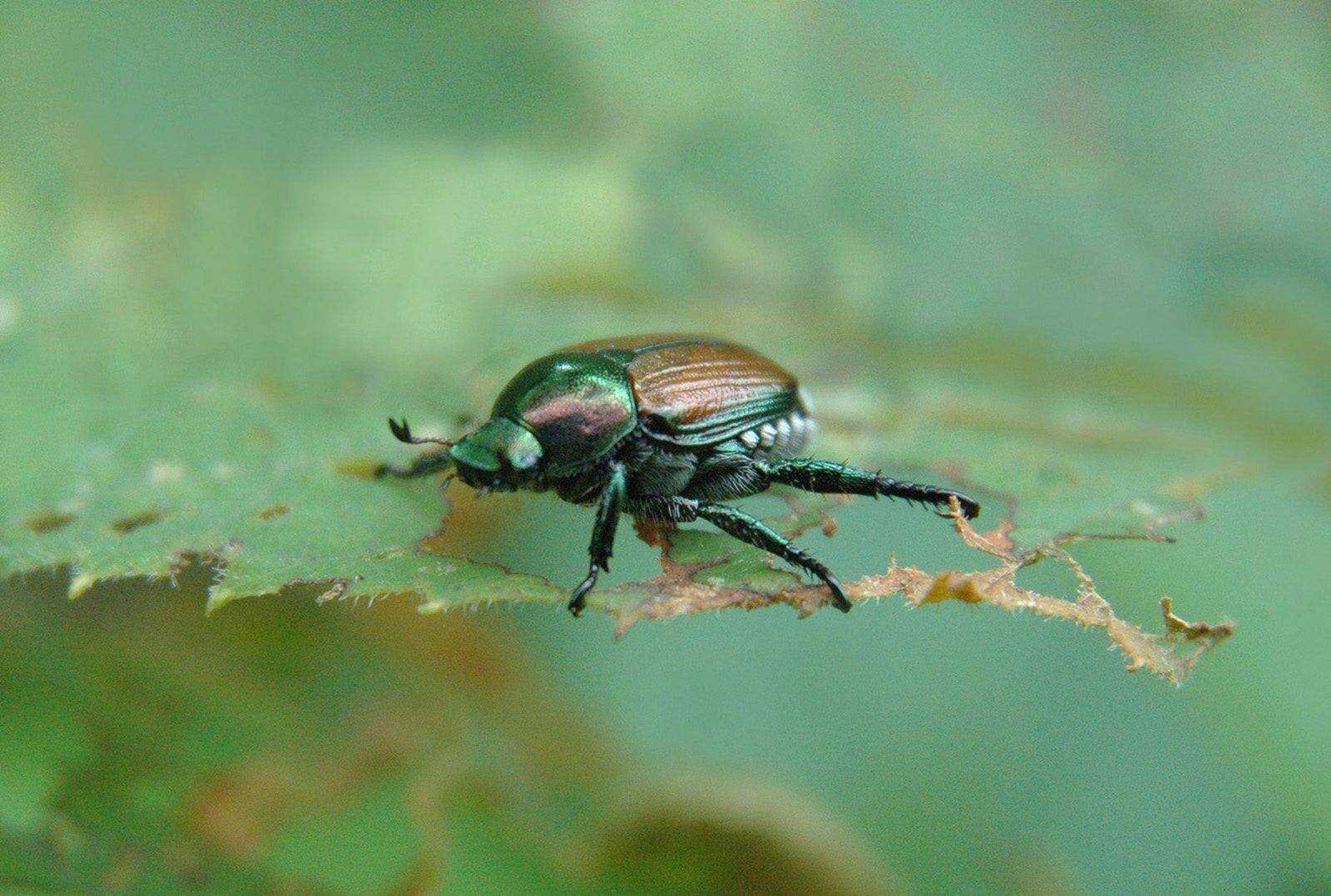Japanese beetles hard to get rid of
This Japanese beetle was making lacework out of a wild grapevine leaf when I photographed it. Other Japanese beetles were feeding on grapevine leaves in the vicinity. I've noticed that in addition to many garden plants, these beetles also love to eat the leaves of some native wild plants like willow and grapevine...
This Japanese beetle was making lacework out of a wild grapevine leaf when I photographed it. Other Japanese beetles were feeding on grapevine leaves in the vicinity. I've noticed that in addition to many garden plants, these beetles also love to eat the leaves of some native wild plants like willow and grapevine.
The life cycle of a Japanese beetle begins when a female burrows a few inches into the ground and lays one to five eggs. In a couple of weeks these eggs hatch and turn into larvae, which spend winter in the ground.
In spring they become grubs feeding underground on plant roots. By late June they will climb out of the soil as adult beetles.
The difficulty in controlling these hungry beetles is becoming well-known in Southeast Missouri. Insecticide use cannot be easily advised because beneficial insects such as honeybees and butterflies will also be killed. Traps seem to ensure a year-after-year infestation where the trap is hung because some of the females will lay their eggs in the ground nearby before entering the trap.
Japanese beetles first came into the United States on a shipment of iris bulbs into New Jersey in 1912.
Moles thrive on the grubs. Some birds -- like Canada geese -- will eat the beetles. I have successfully caught bluegill and catfish on the beetles. Although they can fly, the beetles themselves are quite easy to catch by hand as they are feeding on plant leaves. If you are a fisherman you might take a child fishing and put the beetles to good use.
Through the Woods is a weekly nature photo column by Aaron Horrell. Find this column at semissourian.com to order a reprint of the photo. Find more work by him at the O'Tenem Gallery.
Connect with the Southeast Missourian Newsroom:
For corrections to this story or other insights for the editor, click here. To submit a letter to the editor, click here. To learn about the Southeast Missourian’s AI Policy, click here.











